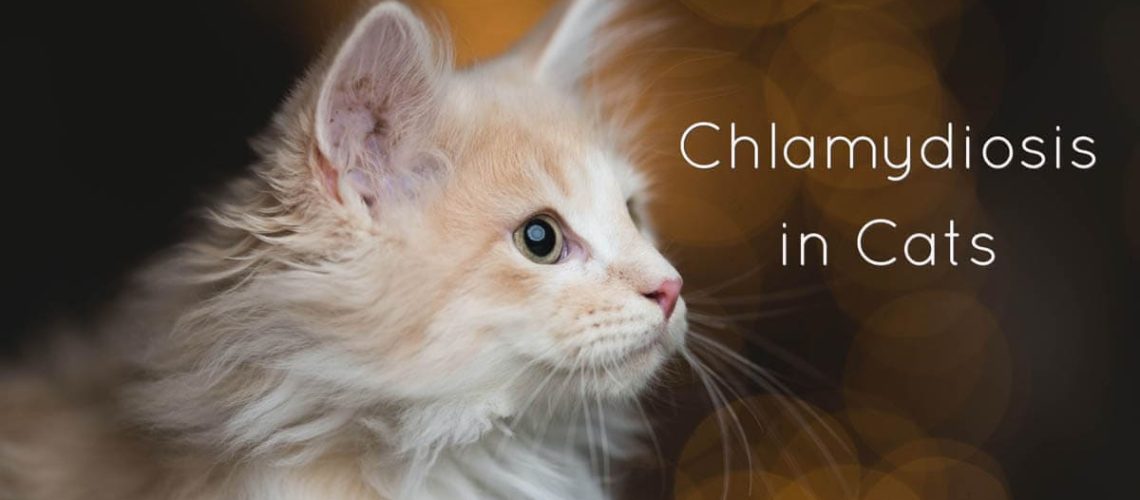Are you curious about the mysterious world of Chlamydia in cats? Well, get ready to uncover a whole new level of feline knowledge! This captivating topic goes way beyond just a name, offering valuable insights that can benefit both cat owners and animal enthusiasts alike. Understanding the ins and outs of Chlamydia in cats is not only essential for their well-being but also for your peace of mind. So, let's dive into this fascinating subject and discover why it's more than meets the eye. Get ready to be amazed by the hidden secrets behind Chlamydia in cats!
Key Takeaways:
- Chlamydia in cats is not related to the sexually transmitted disease in humans.
- It is a highly contagious respiratory infection that affects the eyes and can lead to conjunctivitis.
- Symptoms of chlamydia in cats include redness, discharge, and swelling around the eyes.
- Treatment for chlamydia in cats typically involves antibiotics and supportive care for the eyes.
- Prevention measures such as vaccination and good hygiene practices can help reduce the risk of chlamydia in cats.
Understanding Chlamydia in Cats: More Than Just a Name
What is Chlamydia in Cats?
Chlamydia in cats is not the same as the sexually transmitted disease (STD) that affects humans. It is caused by a bacterium called Chlamydophila felis, which can infect the eyes and respiratory system of cats. This infection is highly contagious among cats and can spread easily in environments where cats live closely together, such as shelters or multi-cat households.
How Does Chlamydia Spread Among Cats?
Chlamydia can be transmitted from one cat to another through direct contact with infected respiratory secretions or eye discharge. When an infected cat sneezes or coughs, tiny droplets containing the bacteria may become airborne and infect other cats nearby. It can also be spread through shared food and water bowls, litter boxes, or grooming each other.
How Cats Get Infected with Chlamydia and Common Symptoms to Look Out For
How Do Cats Get Infected with Chlamydia?
Cats usually get infected with chlamydia when they come into contact with an infected cat's bodily fluids, especially through close proximity or sharing contaminated objects. Kittens are particularly susceptible to chlamydia due to their weaker immune systems.
Common Symptoms of Chlamydia in Cats
When a cat is infected with chlamydia, it may show symptoms such as:
- Redness and swelling of the eyes
- Watery or thick discharge from the eyes
- Sneezing and nasal discharge
- Coughing
- Inflammation of the conjunctiva (pink tissue around the eyes)
- Ulceration on the cornea (transparent front part of the eye)
It is important to note that some cats may not show any symptoms at all, making it difficult to identify the infection. Regular veterinary check-ups are crucial to catch and treat chlamydia early.
Is Chlamydia Contagious to Humans or Only Among Cats?
Chlamydia: A Cat-to-Cat Infection
Good news for humans - chlamydia in cats cannot be transmitted to humans. It is a specific infection that affects only feline species. However, if you have multiple cats at home and one of them is infected, it's important to take precautions and prevent the spread among your feline companions.
Diagnosing Chlamydia in Cats and Available Treatment Options
Diagnosing Chlamydia in Cats
To diagnose chlamydia in cats, a veterinarian will perform a thorough physical examination and may collect samples from the eyes or respiratory tract for laboratory testing. These samples can help identify the presence of Chlamydophila felis bacteria.
Treatment Options for Chlamydia in Cats
Once diagnosed, treatment options for chlamydia in cats usually involve antibiotics prescribed by a veterinarian. Commonly used antibiotics include doxycycline or azithromycin. The duration of treatment may vary depending on the severity of the infection and response to medication.
It is important to administer the full course of antibiotics as prescribed by the veterinarian, even if symptoms improve before completion. This ensures complete eradication of the bacteria and reduces the risk of recurrence.
Preventive Measures to Protect Your Cat from Chlamydia
Preventing Chlamydia Infection
To protect your cat from chlamydia:
- Keep your cat's living environment clean and hygienic.
- Avoid overcrowding in multi-cat households or shelters.
- Minimize direct contact with infected cats until they have fully recovered.
- Wash your hands thoroughly after handling an infected cat.
- Regularly clean and disinfect shared objects like food bowls, water dishes, and litter boxes.
Can Cats Fully Recover from Chlamydia or Will They Always Carry the Infection?
Possible Outcomes for Cats with Chlamydia
With proper treatment, most cats can fully recover from chlamydia. However, some cats may become carriers of the bacteria even after treatment. Carriers do not show symptoms but can still shed the bacteria intermittently, potentially infecting other cats. Regular veterinary check-ups are essential to monitor the cat's condition and prevent further spread of the infection.
Potential Long-Term Health Effects and Complications of Chlamydia in Cats
Possible Complications of Chlamydia in Cats
If left untreated or if a severe infection occurs, chlamydia in cats can lead to complications such as:
- Chronic conjunctivitis (long-term inflammation of the conjunctiva)
- Corneal scarring or ulcers
- Respiratory issues
- Secondary bacterial infections
Early detection and appropriate treatment are crucial to minimize the risk of long-term health effects. If you notice any concerning symptoms in your cat, it is important to consult a veterinarian promptly for proper diagnosis and treatment.
In conclusion, chlamydia in cats is not just a name, but a serious infection that can cause various health problems. It is important for cat owners to be aware of this disease and take necessary precautions to keep their furry friends safe and healthy.
Is chlamydia in cats common?
It is easily spread and highly contagious through eye secretions via objects and through the air. Chlamydia is commonly found in young cats and is a leading cause of feline conjunctivitis. The recommended treatment involves antibiotics and the outlook for recovery is generally positive.
Is chlamydia in cats serious?
If left untreated, conjunctivitis in kittens can lead to pneumonia, which can be fatal. The infection can also continue for several weeks or months, causing discomfort and discharge, and the infected cat can spread the infection to other cats.
How did my indoor cat get chlamydia?
Chlamydia can be transmitted through close contact with an infected cat, meaning that all cats in a household can potentially become infected. Therefore, if one cat is diagnosed with Chlamydia, it is recommended to treat all cats in the household.
How long are cats contagious with chlamydia?
If not treated, conjunctivitis can last for two months or longer, and cats can continue to spread the bacteria through their eye secretions for several months, potentially infecting other cats.
Is cat chlamydia permanent?
The outlook for cats with Chlamydia varies, with some experiencing more severe symptoms than others. However, with appropriate care and treatment, most infected cats can fully recover. It is important to note that without treatment, this disease can lead to serious respiratory infections.
Can cats get rid of chlamydia?
Antibiotics are highly effective in treating chlamydia infection in cats. Systemic antibiotics are more successful than local topical treatment, as stated in a study by Sparkes et al. in 1999.

















